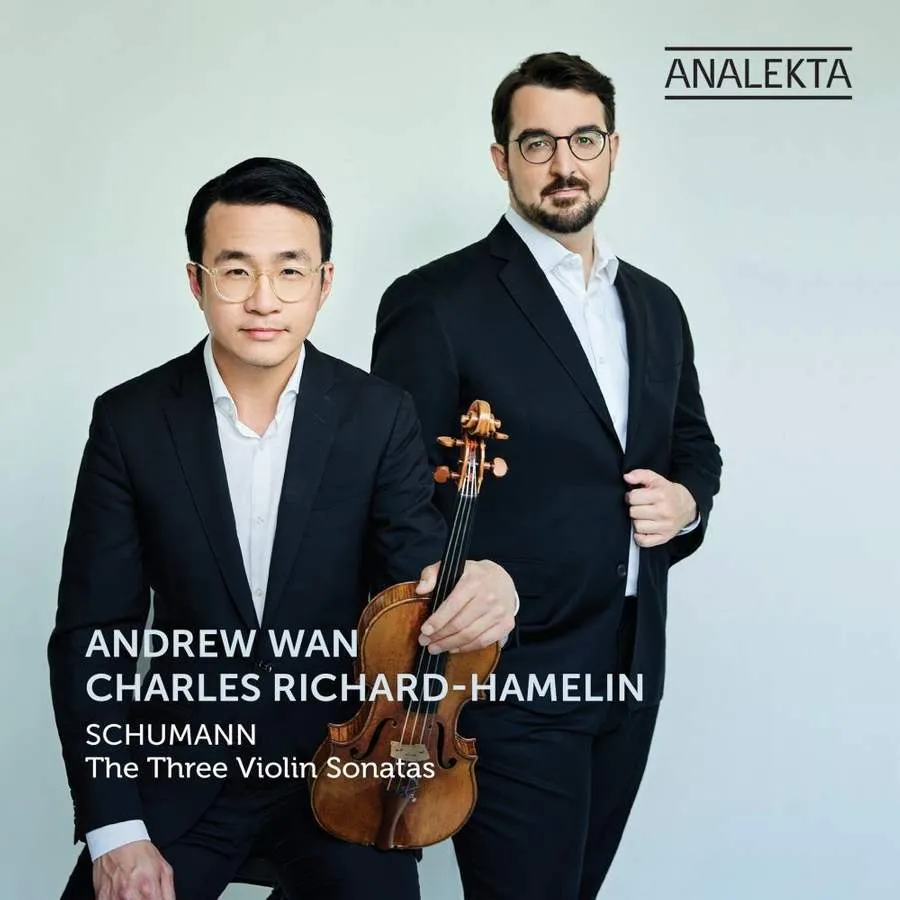
R Schumann Violin Sonatas Nos 1-3 Andrew Wan (violin), Charles Richard-Hamelin (piano) Analekta AN29003 70:32 mins
Schumann’s sonata experiments are among the most treasurable of the 19th century. Exalting on a knife-edge between Classical concision and Romantic freedom, his post-Beethovenian realms of fantasy are often (most notably in the string quartets) extremely challenging to tune into convincingly. That is where Andrew Wan and Charles Richard-Hamelin, fresh from their outstanding complete Beethoven sonata series (Analekta AN28794-96), really come into their own. Rather than apply layers of generic rhetoric to Schumann’s tantalisingly restrained-impassioned soundworlds, they surf its expressive undercurrents with a radiant sensitivity that unerringly captures its elusive spirit.
Wan brings to the table a poetic litheness, precision, silvery purity and tonal clarity, inflecting Schumann’s limpid phrases with a gentle ease, complementing Richard-Hamelin’s velvet-gloved sonority and glowing cantabile to perfection. In their classic ECM accounts, Carolin Widmann and Dénes Várjon are more overtly impassioned and indulge Schumann’s dreamscapes with supreme eloquence; yet Wan and Richard-Hamelin are also highly compelling, especially in the Third Sonata. Two movements – the intermezzo and finale – were originally composed for a collaborate sonata (the Frei-Aber-Einsam – ‘Free but Lonely’), devised by Schumann and for which Albert Dietrich had provided the opening movement and Brahms the scherzo. Fine though the other contributions were, Schumann felt on reflection that overall the work lacked stylistic continuity and so provided two movements of his own. Here, Wan and Richard-Hamelin’s lighter touch proves enchanting in a work that in the wrong hands can easily outstay its welcome.
Julian Haylock

